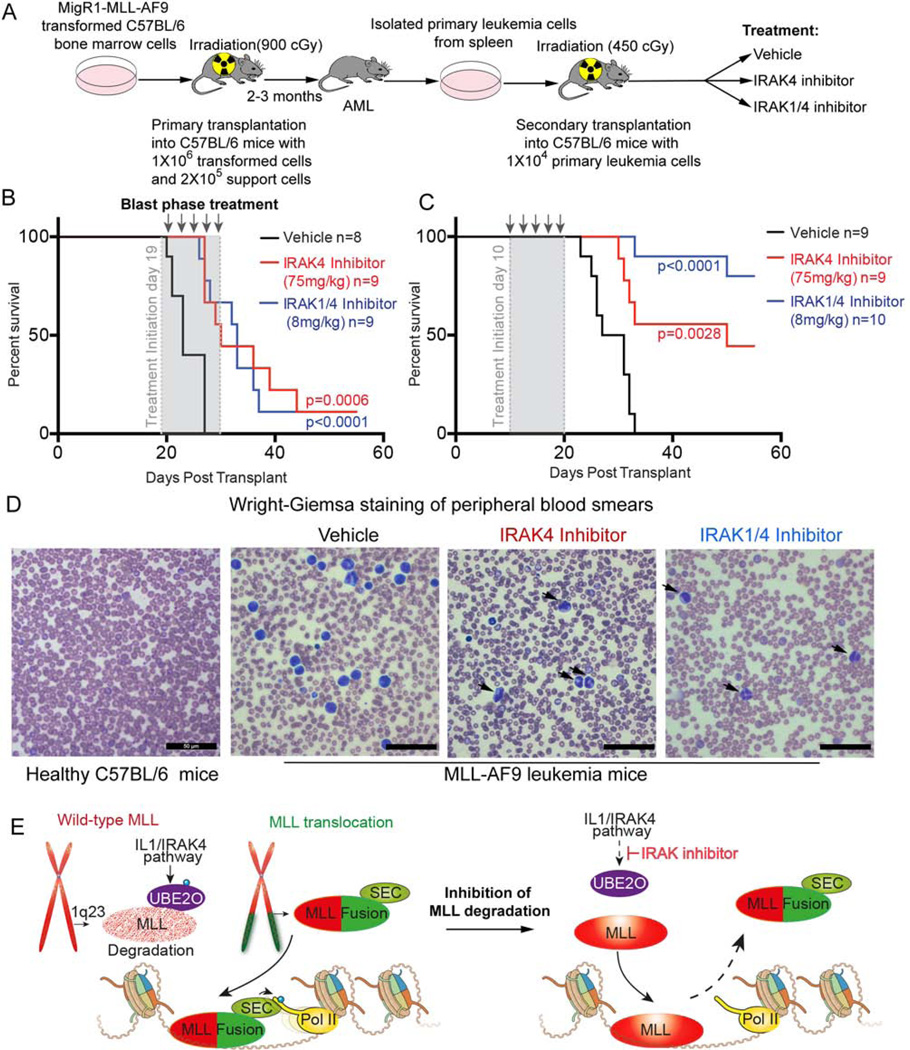Figure 7. IRAK inhibition substantially delays disease progression and improves survival of MLL-AF9 leukemia mice.
(A) Schematic of the development of secondary murine MLL-AF9 leukemia. After transformation of MLL-AF9, c-Kit+ HPSCs were transplanted into lethally irradiated C57BL/6 mice with 1×106 transformed cells and 2×105 support cells. Leukemia cells from primary AML mice were isolated and transplanted into sublethally irradiated C57BL/6 mice. Drug treatments were started at day 10 or 19 after transplantation.
(B) Kaplan-Meier survival curves of secondary transplanted C57BL/6 mice after vehicle and IRAK1/4 or IRAK4 inhibitor treatment at day 19 (blast phase). Vehicle or IRAK inhibitors were administered every other day by intraperitoneal injection for a total of 5 treatments. Leukemia was confirmed at the endpoint for each transplant mouse. The number (n) indicates the number of mice in each group. The p values were calculated using the log rank test.
(C) Kaplan-Meier survival curves of vehicle and IRAK1/4 or IRAK4 inhibitors treated C57BL/6 mice transplanted with 1 × 104 primary MLL-AF9 leukemia cells. 10 days after transplantation, vehicle or IRAK inhibitors were administered every other day by intraperitoneal injection for a total of 5 treatments. The p values were calculated using the log rank test.
(D) Wright-Giemsa staining of peripheral blood smears from vehicle and IRAK inhibitor-treated leukemic mice at the endpoint. Arrows indicate partially differentiated MLL-AF9 blast cells after IRAK inhibition.
(E) In the leukemic cells, the wild-type MLL (shown in speckled red) expressed from the non-translocated chromosome (red) is less stable than the MLL chimera (shown as solid red for MLL and green for the fusion partner). Preventing wild-type MLL degradation (MLL now solid red) through inhibition of the IL1/IRAK pathway (via the IRAK inhibitor) allows wild-type MLL to compete with the MLL chimera for chromatin occupancy. The release of the MLL chimera from chromatin upon stabilization of the wild-type copy of MLL removes the oncogenic addiction of leukemic cells to MLL chimeras.
See also Figures S7.

